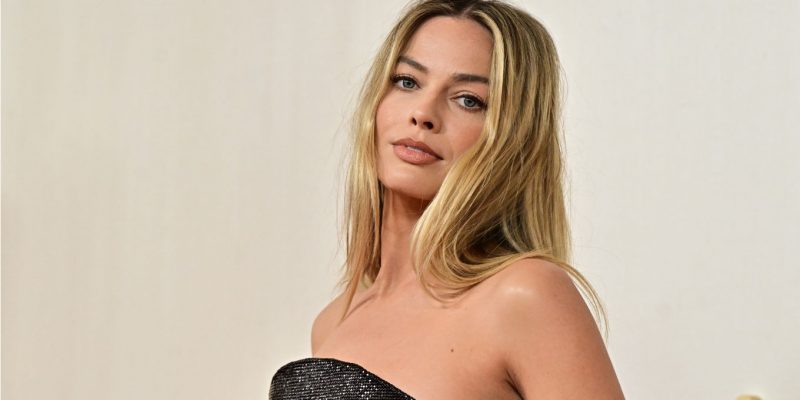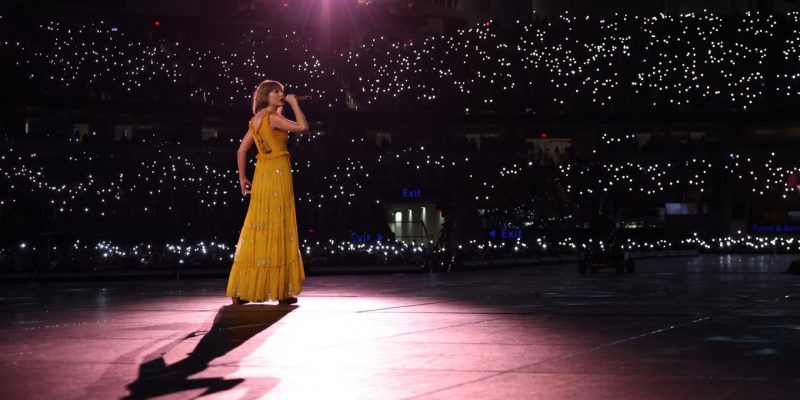Culture
Can using different types of models benefit brands?
Fashion companies could be missing out on the bottom line when they use only one kind of model.
by : Ben Barry- May 11th, 2012

When I first explained the topic of my doctoral thesis to my academic colleagues at Cambridge University, I was met with puzzled looks. “Models in advertising?” one asked. “You mean the economic model of advertising?” another questioned. I attempted to clarify: “I’m studying models in advertising—the women in the advertisements— and particularly in fashion advertisements,” I said.
Their confusion and curiosity weren’t unexpected. Although the impact of models on
body image has been studied, very little research has been done on how models—depending on their size, age and race—influence purchasing decisions. Instead, marketers rely on long-established industry norms to guide their casting decisions. I wanted to challenge those norms to see if there was a business case to support a more diversified approach.
My research, which was funded by the Ogilvy Foundation, took me to cities across Canada and the United States, where I surveyed and facilitated focus groups with more than 2,500 women. They ranged in age from 14 to 65 and in dress size from 0 to 18, and they reflected a range of ethnicities. I recorded their responses to mock fashion ads—which I created for my study—that featured models who varied in size, age and race but all wore the same
Diane von Furstenberg wrap dress. Save for the models, the ads were identical. My findings were surprisingly intuitive and yet revolutionary within the fashion industry. I’ll get to the numbers in a moment. First, it’s important to understand what misguided theories—rather than facts—are behind the casting decisions companies make for their marketing campaigns.
The general assumption that models are merely “clothes hangers” is rather pervasive in the multi-billion-dollar fashion industry, but they play a much more influential role: They are the bridge between the consumer and the brand. They not only demonstrate how clothes fit and flatter the human body but also convey a brand’s image and identity. Most important, they breathe movement and vitality into clothes—transforming static garments into three-dimensional creations.
Yet, in spite of this, companies seldom cast models who reflect their markets. The typical model is size 2, whereas the average woman is size 14. Most models are between the ages of 15 and 24, yet there are more Canadians between 40 and 49 or 50 and 64. Only 10 percent of models in North American fashion ads are non-Caucasian, yet 16 percent of the Canadian population is non-Caucasian—and that increases to 40 percent for Toronto and Vancouver.
In the business community, the general consensus is that there is a discrepancy between marketing and the market because fashion advertising fuels consumer demand by creating a craving that can’t be satisfied. In other words, marketers hire models to sell an image that most women can aspire to but never achieve. As Karl Lagerfeld explained in a recent interview on CNN: “Unreachable beauty is a reminder to make an effort. But if you see something, and you can reach what you see, then you do not have to make an effort anymore.”
Keep reading to discover how broadening the perception of beauty could benefit businesses on the next page…
 Researcher Naomi Mandel puts it more bluntly in reference to her work on models and self-esteem: “It’s better to use extremely thin models because that’s what makes women feel bad about themselves and want to buy the products.” She adds that because women will never be as thin as the models, they’ll always feel inadequate and continually demand the clothes.
Researcher Naomi Mandel puts it more bluntly in reference to her work on models and self-esteem: “It’s better to use extremely thin models because that’s what makes women feel bad about themselves and want to buy the products.” She adds that because women will never be as thin as the models, they’ll always feel inadequate and continually demand the clothes.
Marketers also explain away the lack of diversity on “economies of scale”—a.k.a. the sample size. Fashion brands create a prototype of each garment in their collection—a sample— for marketing purposes months before its retail production. The sample is a size 2, which means that the model hired for fashion shows and ads must be a size 2. Although brands typically spend $750,000 to show at New York Fashion Week, they argue that creating samples in a few sizes—such as 4, 8 and 14— is too expensive; the extra inches of fabric might put them in the red.
Although I’ve worked as a modelling agent in the fashion industry for 15 years, I’ve never subscribed to the traditional viewpoint. My dad passed away when I was young, so I grew up surrounded and supported by women. While my mom, grandmother and aunt didn’t look like typical models, I was always in awe of their beauty. I remember seeing my then 75-year-old grandmother on the night of her 50th wedding anniversary—in a floor-length ivory gown—and thinking that she was the most beautiful woman in the world.
When I was 14 years old, I had a friend who wanted to be a model, but every agency she went to told her that she was “too big.” I was shocked; I couldn’t understand why she—a size 12—was being rejected. I sent her pictures to a magazine and landed her a fashion spread. With one gig under my belt, I became her agent. Now, 15 years later, my single client has turned into a roster of 100 models who range in size, age, background and ability.
My experiences have fostered the steadfast belief that the fashion industry needs to broaden its perception of beauty—and I am not alone. Since the publication of Naomi Wolf’s
The Beauty Myth more than two decades ago, the debate over the size of models has gone mainstream. Hardly a fashion week goes by without the topic making headlines around the world. The story has been that
ultra-thin models harm some women’s well-being; by living in a culture where only thinness is celebrated, many women internalize it as their own beauty standard.
Some governments share this viewpoint. In Italy, legislation was enacted to prevent models who are too skinny from strutting catwalks. The French government considered imposing fines—even jail terms—on brand executives who promote “excessive thinness” in ads. Here in Canada, the Quebec provincial government introduced the Quebec Charter for Healthy and Diverse Body Image in 2009 to encourage the fashion industry to promote diversity. These responses are logical—governments are in the business of protecting the health of their citizens. But the fashion industry is in the business of business; it will only be motivated to diversify if it’s a strategy that boosts the bottom line.
Want to know what happens when models of different sizes are used in campaigns? Read on to the next page…
 Recent anecdotal evidence has demonstrated that it can. When Dove launched its ads with “real women” in the United States, sales increased by 600 percent in two months. You’d think that such success would stir industry-wide change en masse; it didn’t. The campaign’s success was written off as an anomaly, and it was suggested that it was effective only because its novelty generated media attention. From the fashion perspective, Robert Kolker, a media-studies professor at the University of Maryland, argues that Dove’s strategy is unlikely to translate to fashion brands because selling fashion is about illusion: “The ideal is too lovely a fantasy to give up…. Fairy tales are more potent than reality.”
Recent anecdotal evidence has demonstrated that it can. When Dove launched its ads with “real women” in the United States, sales increased by 600 percent in two months. You’d think that such success would stir industry-wide change en masse; it didn’t. The campaign’s success was written off as an anomaly, and it was suggested that it was effective only because its novelty generated media attention. From the fashion perspective, Robert Kolker, a media-studies professor at the University of Maryland, argues that Dove’s strategy is unlikely to translate to fashion brands because selling fashion is about illusion: “The ideal is too lovely a fantasy to give up…. Fairy tales are more potent than reality.”
Nevertheless, some fashion brands have courageously, yet cautiously, used curvy and mature models. In September 2010, Tom Ford launched his eponymous womenswear collection during New York Fashion Week by showcasing his creations on a diverse group of women, including Rita Wilson and Lauren Hutton.
Jean Paul Gaultier cast several models in the size 10 to 14 range to walk in his Spring/Summer 2011 show at Paris Fashion Week. He even hired plus-size singer Beth Ditto to open and close the show. But with only a few of these models in one show, and never in ad campaigns, their ability to help or hinder sales is unclear.
With my research, I hoped to explore that business potential. My study entailed two phases. In the first phase, I conducted experiments to test women’s purchase intentions when they viewed models who had similar and dissimilar sizes, ages and races to themselves. Each woman was randomly shown two of eight possible ads where the models might have reflected some of their traits, all of their traits or none of their traits. To avoid biasing their opinions, I didn’t reveal the true aims of my study to them. In the second phase, I facilitated focus groups with different women to help identify reasons for particular purchase intentions. I found that Canadian and American women increased purchase intentions for fashion products advertised by models who reflected their own demographics: age, size and—for non-Caucasians—race. While one side of the debate over model diversity argues that curvy models should replace thin ones— assuming that one model is universally more effective than another—I find that every model type can be effective. Their effectiveness depends on whether the model shares the consumers’ traits.
My study found that women increased their purchase intentions by more than 200 percent when the models in the mock ads were their size. In the subgroup over size 6, women increased their purchase intentions by a dramatic 300 percent when they saw curvier models. Conversely, when women saw models who didn’t reflect their size, they decreased their purchase intentions by 60 percent, and women over size 6 dropped their purchase intentions by 76 percent.
My results weren’t limited to the issue of size. Consumers increased their purchase intentions by over 175 percent when they saw models who reflected their age; in particular, women over the age of 35 increased their purchase intentions by 200 percent when they saw older models. When models didn’t reflect their age, consumers decreased their purchase intentions by 64 percent. Furthermore, black consumers were 1.5 times more likely to purchase a product advertised by a black model.
The numbers paint an interesting picture, but they don’t tell the women’s stories: Why did women increase purchase intentions when models looked like them? In the focus groups, women explained that they could better picture themselves in the dress advertised by similar models. They could imagine how the dress would
flatter their shape, how the aesthetic would suit their age and how the colours would complement their complexion. One woman, on viewing a similar-looking model, put it this way: “I’d buy the dress in an instant because [the model] looks like me. I can see how this dress will hug my curves in all the right spots.”
Find out how old marketing beliefs are no longer the reality (it may be surprising), on the next page…
 I also discovered that women—especially those seldom reflected in fashion ads—felt beautiful and confident when they saw models who reflected their traits and felt motivated to buy the dress. When one mature woman saw an older model, she explained: “[The model] does more than make me feel beautiful; she inspires me to go out and get this dress and celebrate my beauty.” While some women in my study felt insecure when they saw idealized models, their insecurity didn’t translate to purchase intentions as the industry hopes; it actually turned them off the product. As one of the participants summarized: “Ads like this want us to be part of their world, but they have the opposite effect for me. I feel excluded.”
I also discovered that women—especially those seldom reflected in fashion ads—felt beautiful and confident when they saw models who reflected their traits and felt motivated to buy the dress. When one mature woman saw an older model, she explained: “[The model] does more than make me feel beautiful; she inspires me to go out and get this dress and celebrate my beauty.” While some women in my study felt insecure when they saw idealized models, their insecurity didn’t translate to purchase intentions as the industry hopes; it actually turned them off the product. As one of the participants summarized: “Ads like this want us to be part of their world, but they have the opposite effect for me. I feel excluded.”
Contrary to long-held marketing wisdom, fashion ads don’t need to lead women to aspire to an unattainable ideal to sell
products. Instead, women will buy fashion when models convey a realistic, attainable image and make them feel confident; they will continue to demand the products to maintain the advertised look and their feelings of empowerment. To unleash this economic potential, brands should cast models who mirror the diversity of their target market: If a brand sells sizes 2 to 14 and the age of their target consumer is 18 to 35, the models should reflect the same size and age ranges. It’s clearly in a brand’s financial interest to create samples in a few sizes to reflect the diversity of their consumers.
My focus groups also revealed the conditions that need to be met if diverse models are going to be effective. Younger to middle-aged women explained that a fashion brand’s commitment to diversity is just as important as showcasing it. As a result of online media, consumers— not only fashion journalists—now see the latest collections from fashion weeks around the world. When two of 20 models on a runway are larger or older, consumers appreciate the gesture but believe it’s tokenistic. As one participant noted: “Showing one older woman out of 30 is really a marketing ploy—it’s not a genuine appreciation of our beauty and, more important, our spending power.” Tokenism also springs to mind when brands feature diverse models on their runways but not in their campaigns or merely as a one-time occurrence. Similarly, when a brand showcases curvy or older models in clothes that don’t quite fit or flatter them, it looks like they’re trying to grab a quick headline.
Marketers may also assume that using a larger or older model allows them to skimp on the creative direction—resulting in an image that looks more like a passport photo than a fashion ad. This practice reverses the positive effects of casting diverse models. The women in my research want models—regardless of size or age—to inspire them with glamour, artistry and creativity. One woman said it best: “What’s the point of buying fashion if you’re going to look unfashionable?” The underlying message is that fashion needs to sell aspiration, but it is not a standardized model’s age, size or race that is aspirational; it is the clothes, styling and creative direction of the shoot.
What would our world look like if the results of my research influenced reality? Imagine this: You open a fashion magazine. It is filled with stunning glossy ads from the top fashion and beauty brands. You see gorgeous clothes, dramatic hair and makeup and breathtaking photography. Starring in these ads—showcasing fashion’s glamour, artistry and creativity— are models who reflect the full panorama of women’s beauty. So, brands, I ask you this: Will you continue to use an outdated marketing model or adapt to the new consumer mindset and reap the rewards?
Read more:
Extreme diets to get a bikini body
May 2012 cover girl Cobie Smulders on her big-screen breakout role
Behind the curves: Raphael Mazzucco’s CULO
Newsletter
Join our mailing list for the latest and biggest in fashion trends, beauty, culture and celebrity.
More from Culture
Read Next

Fashion
H&M's Latest Designer Collab With Rokh Just Dropped (And It's So Good)
We chatted with the emerging designer about the collaboration, his favourite pieces and more.
by : Melissa Fejtek- Apr 18th, 2024

Culture
5 Toronto Restaurants to Celebrate Mother’s Day
Treat your mom right with a meal at any of these amazing restaurants.
by : Rebecca Gao- Apr 18th, 2024

Culture
Discover Club Med’s Stunning Exclusive Collection
Vacation destinations that bring pure luxury and comfort.
by : ELLE Canada- Apr 8th, 2024




